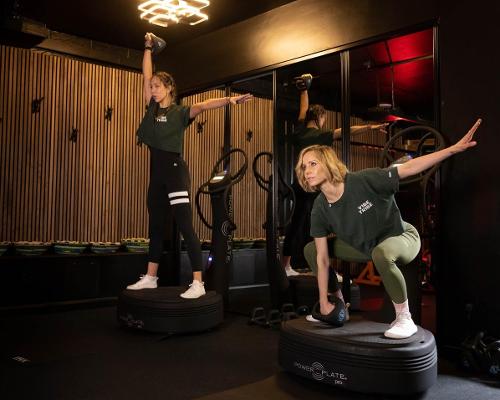features
Retention series: Keep it up
The member journey should last the full length of the membership – and, if possible, beyond. In the second of his three-part series on retention and the member journey, Guy Griffiths looks at the ongoing member
You’ve managed to lead as many members as possible through the new member journey, and they’ve hopefully developed the habit of coming to the club regularly. However, they haven’t completed the full member journey – far from it. In fact, your job is to try and prevent them from completing the journey, keeping them on the path to lifetime membership.
Some members will inevitably drop through the net, and we’ll look at absent and ex-members next time around. But at the heart of the problem for many clubs is the fact that the member journey or service plan is often so focused on new members that it falls apart a couple of months after they join: a member only has to turn down a review appointment and they can drop off the radar, never to be spoken to again.
Many incidents will get in the member’s way on their journey, but if you can identify these, you have the opportunity to take action and measure the overall effect of those actions. So how can you reduce the number of members falling through the net?
Identifying members at risk
There are many methods and systems that help identify members at risk of leaving. Rather than tell you which one to buy, let’s keep things simple and consider how you could recognise members in your club who need attention.
First up, visit frequency is the key factor in any drop-out-risk calculation. Smart systems base this on historical data, so for example a member who always visits three times a week, then drops to twice or once, will be flagged up. Conversely, someone who typically visits once a week and then makes four visits could be over-exercising and so also high risk.
But beware the ‘recommendation’ of three visits a week. While people should take frequent exercise, at GG Fit we see no consistent pattern, in terms of differing retention levels, between gym members who visit once a week and those who visit three or more times a week once the new member phase is over.
Of course there are differences in retention rates between clubs due to other variables, but we actually see some clubs’ low frequency members sticking around longer; in other clubs, it will be the higher frequency members who have longer average memberships. Indeed, the average member visit frequency for most clubs is around once a week. Well-staffed private clubs have higher average visit frequencies – some as high as two visits a week – whereas budget clubs often average well under one visit a week per member.
Knowing the trends and averages at your club is the best place to start. Then if you can, find out how often each member intends to visit, and check how often they actually do visit. If this is drastically different, take action. Trying to persuade a member who comes once a week to visit more often can even have a negative effect on retention.
A second identifier is whether a review is due. Members may have been promised, or signed up to, having a review within a few months. We’ll return to what constitutes a review in a moment, but suffice to say it’s a classic retention mechanism. However, so many members fall through this gap that it becomes ineffective. Clubs struggle to monitor it and it gets dropped.
The process is simple: ask your members when they next want a review, then record that date on your system or on their programme card. When the date comes around, book their review. You could also consider systematically offering a review to anyone who has not had one for, say, six months or longer.
The old-school approach is to flick through the exercise card file and flag/sticky-note/remove any members who are due a review. Of course, if you’re using an exercise management system, it should do this for you. You can use similar methods (flagging/moving exercise programme cards) for members who have had no contact recorded for a long time, or who’ve been absent for, say, 45 days. When they come in, or return, it’s important to check in with them, record notes for other members of the team and take any necessary follow-up action, such as a short-term review to see how they’re getting on.
These are just a couple of clear-cut indicators of drop-out risk, but other factors may combine with these, such as membership length, age or type.
Take action
The first, most basic, form of action is to contact the member. Talk to them. If they’re visiting much more or less frequently than usual, find out why, and if it needs addressing, ask if there’s anything they can do to fix it. Without going into a whole article on member interaction and coaching, it’s better for a member to work out the solution for themselves rather than take on your suggestions (see p54, and HCM May 13, p46). You’re there as their support in making the changes they want to make.
Meanwhile, lots of clubs are starting to change their ‘programme review’ to simply a ‘review’. The idea is to alter the perception that a review involves an increase in exercise intensity, duration or resistance. Instead, you offer a chat about what the member has achieved, their current exercise goals and any new exercises they would like to try – or indeed old ones they don’t like.
Many members are either afraid of, or do not see the value in, a traditional exercise programme review; it’s therefore difficult to get them to make an appointment. A regular review session that’s more focused on them and their motivation is easier to sell to members. At the end of the day, the review is a good opportunity to spend some time with the member, listen to them and get to know them more.
Just speaking to your members about a review can help with their motivation. For example, staff at a local authority group of centres spoke to 1,200 members about their review in the space of one month. Only around 200 members actually had a review that month, while others set a next review date. Nevertheless, the average visit frequency of all 1,200 members increased by 67 per cent, from 0.9 visits a week to 1.5 visits a week.
Any other interaction with an ongoing member needs to boost their motivation to attend the gym regularly; sadly it’s not possible to give motivation to your members – they have to find it for themselves. Gym challenges and events are good ways to support their motivation levels, and ‘train with a friend’ is another good initiative. If you give out free guest passes at membership milestones – three, six and 12 months, for example – measure how many are used, and through which members.
Before you start a new class timetable, do a test run and invite only existing members. In other words, make your members feel privileged – there are so many new member offers out there, but your existing members need to feel as important, or more important than, your new members.
Measure
As with the new member journey, unless you measure your efforts, you will not be able to improve your member retention. Reports and systems exist to look at the big picture, but here are three quick metrics that you can use as monthly performance indicators.
Firstly, check how many reviews are due or overdue each month. There will be an acceptable number of reviews that should be due each month depending on your total active members, but you should be trying to reduce this number most months. If you can monitor this per instructor, you can introduce KPIs and competition between instructors not to fall behind.
Active member percentage is another simple gauge. Divide the total number of paying members by the number of members who have made visits in the last four weeks: you’re looking to increase this number each time by reducing drop-out. The higher your active member percentage, the healthier your business and membership will be.
Finally, count how many members drop off the ‘active’ list each month. Count how many of your active members have not visited for 45 days, for example, or simply count how many exercise cards you remove from the file each month due to inactivity. Your target is to get this count down to zero, which means that no members have become inactive that month… if you do, throw a party for all your staff, as they’ve been working very hard!
Summary
You’ve put a lot of time and effort into getting your members into the exercise habit; your goal now is to keep them coming regularly, whether once or three times a week. Members who are at risk of leaving are generally quiet about it. You must identify who you think could fall by the wayside, take action, and measure the effect. Stop your members from coming to the journey’s end!
In next month’s Health Club Management, we’ll take a look at what to do if your members do slip through your net.
Guy Griffiths works for GG Fit, an independent consultancy that helps clubs improve member retention by working with staff, systems and processes. His new book, Stick Around, is available from all good bookshops and online retailers.
Web: www.ggfit.com
Twitter: @ggfit










































































